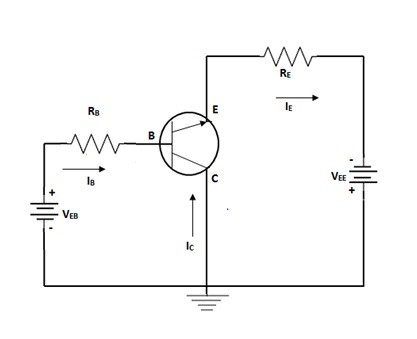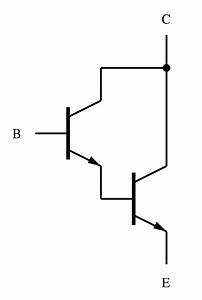A Common Collector Amplifier is formed from the basic Bipolar Junction transistor (BJT). Basically it is required to have four terminals so that two are preferred for the input and the remaining two is for output side. But it has only three terminals named as collector, base and the emitter. Among these terminals one is made common so that it can be connected on both sides of input as well as output.
This leads to the formation of three configurations that are common base, common collector and the common emitter. Each configuration based on its voltage and the current gains is utilized for respective specifications. It can either be of P-N-P or N-P-N type configurations. The configuration of the common collector is also known as emitter follower because of its dependence on emitter terminal and its currents. The above are the some of the basics before we understand the emitter follower or the common collector amplifier.
What is CC Amplifier?
An amplifier circuitry which is designed by considering the collector terminal to be common for the input and the output sides is defined as Common Collector Amplifier. It is highly known for its feature of producing higher values of the gain in current.

Common Collector Circuit Diagram
Common Collector Amplifier Design/Working
The basic purpose of the amplifier is to amplify the signals and that improvises the strength of the signal. The input is to be applied at the base terminal. The collector is to be treated common for both input and the output sides or sometimes considered to be grounded.
The current at the output is to be taken from the emitter. Hence the load receives the currents from the base and the emitter. The emitter current generated is the sum of the base and the collector currents. This results in the increase amount of current and the gain value of the current is maximum in this case. The input value of the voltage and the output value of the voltage generated are in direct relation with each other. Hence there is no phase shifts are evident in between the applied input and the output signals generated.
Based on the resistors connected at the respective terminals it is responsible for maintaining the quiescent point in the active region. Hence the transistor behaves efficiently in such cases and acts as an amplifier results in the increase of the signal strength. But it is unable to match the requirements so that its design can be considered to be having large amounts in current gain because of its ups and downs in the input impedance values. In order to overcome this pair of this common collector configure transistors are connected.
Darlington Emitter Follower
The drawback of the emitter follower can be overcome by connecting them in pairs. The pairs are connected in such a way that the output of the transistor is connected to the input of the base of the second transistor. The efficiency of the transistor is increased due to the Darlington pair configuration.

Symbol of Darlington Transistor Pair Configuration of Common Collector Configuration
This connection makes the output current generated at the emitter terminal of the first transistor as the input current of the second transistor for the base terminal. Hence the overall gain of the current is the product of the individual transistor gains. This makes the gain of the configuration to become high because of the Darlington pair configuration.
Characteristics
The basic characteristics of the common collector amplifier are as follows.
- The variation in between the applied input and the output voltage is directly related to each other. That is increase in the input voltage also makes the output voltage to increase. Practically if there simulation results are noted there will be only 0.7 volts difference between the signals generated at the output because of the input.
- As the circuit of this configuration is designed its input is taken across base and the output is across the emitter.
- In this type of amplifier the load resistance is able to receive the currents from both the emitter and the base terminals.
- The resultant emitter current is the combination of the base and the collector currents. This makes the circuit to achieve the higher current gains.
- It maintains the gain of the voltage at the level of unity.
- The gain of power for this transistor is to be at medium.
- There is no evident phase shift between applied input and the generated output signals.
- The resistance at the input of this circuit is high enough.
- The resistance value at the output for this circuit is considered to be low.
The above discussed are the some of the characteristics of the common collector amplifier.
Applications of Common Collector Amplifier
The common collector has the great applications because of its high current gains. It is also known for its direct relation between the applied input and the output voltages. Some of the applications are listed as follows.
- In the matching circuitry of impedance these circuits are utilized.
- It is well known for its capability of switching technique.
- For the buffering applications these transistors are used.
- In the isolation of the circuits these transistors are used.
The above discussed are the some of the basic applications of the common collector amplifier.
The collector terminal is made common and designed in such a way that it can be resulting in the efficient high current gains. Because of low resistance at the input it can be used in various applications where there is no phase shifting is evident between the applied input and the considered output signals. As the emitter terminal is responsible here for getting high current gains its common collector configuration is known as the emitter follower.
Know more about Open Collector MCQs.
Please refer to this link to know more about Common Collector Amplifier MCQs
Whereas the drawbacks in the common collector can be overcome by the pairing concept of the transistors this is possible by the Darlington pair. It can be used in the last stage of the amplifying circuits where the signal generation is possible. What is reason behind preferring the common collector amplifiers during the generation of the circuits can you describe?